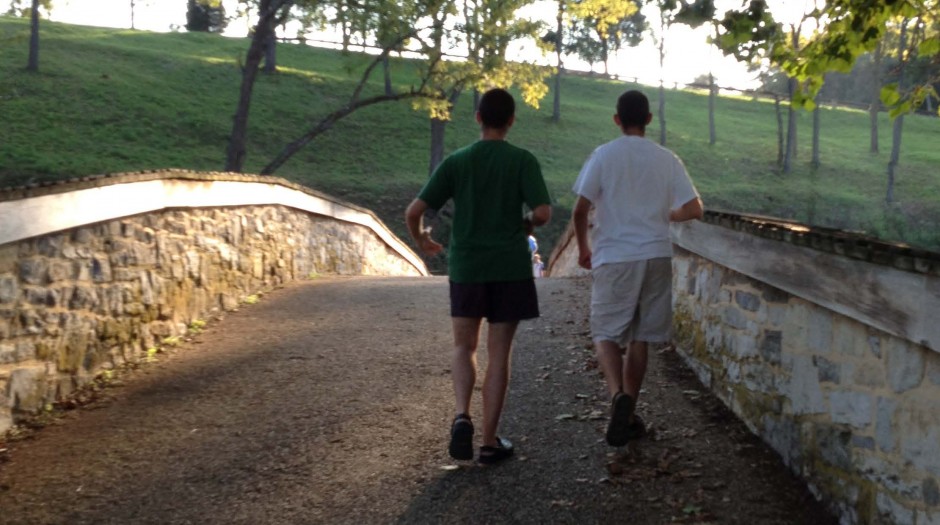Adult autism comes in many shapes. I’m no artist, but as parents we all strive to paint our kids a path they can follow toward happiness and health. If I drew the life path of my neurotypical daughter, it would be one of a continuous line, moving upward and forward through successive milestones and accomplishments.
My 18-year old twin sons’ variant of autism feels like living in a world of concentric circles. This is not a depressing commentary, dear reader; far from it. Here on a full, grateful post-Thanksgiving morning, I’m counting many blessings, including that the boys lie sleeping, the daughter did not take me up on my 5 am Black Friday shopping offer, and the hotel has free coffee and Internet access enough for all our devices, electronic and metaphorical.
But I’m struck by last night’s incident at the hotel pool. J. was with Grandma while I took W. back to the room when he was tired of swimming and I felt a public disrobe coming on. (see previous posts for more on the delightful escapades of life with Captain Commando). J. had been happily swimming when 20 rowdy kids descended on the pool and took over. Being a child who largely prefers quiet, J. didn’t know what to make of it. So he walked in circles around and around the pool, over and over, until Grandma realized he was adrift and brought him back.
Autism is so like that – so framed by repetition, of behaviors that calm the autistic individual yet look odd, like ever news motor tics that thwart our best-hoped efforts at a path toward normalcy. It’s also about parents’ need to repeat the teaching of skills, and the correction of maladaptive behaviors, over and over with a sense of ad nauseum that can be wearying, and make us feel doomed to ever-draw the same circle so often that it cuts a rut into the paper, instead of soaringly upward lines.
More importantly, what we do as parents to special kids – often without realizing it – is to see and decode the shapes drawn by our kiddos’ behavior. Grandma so fittingly read the shapes of Jeff’s laps around the pool last night, as a cry out that said “What’s going on here? Swimming calms me but what do I do now when there’s no room for me and it’s too loud?”
My task – indeed, that of all parents of autistic individuals, regardless of functioning level – is to see shapes made from everyday actions, and gently stretch them upward and beyond. It’s a mini-revelation, actually. It’s made me think today about some other recent minor behaviors I’ve got to shape, like W.’s tendency to stack and sort vs. read flash cards, and J.’s motoric scribbling when it’s time to paint or color. Theses are certainly minor issues relative to disrobing in public but when viewed as a picture of a person, they point out areas we can perhaps address, or reshape.

twinmom, good evening!
Circles, for sure! At least, they’re circles when viewed from above or below, which seems to be our usual frame of reference. Two dimensional, endlessly around and around, seemingly rut-making, just as you note.
But viewed from the side, where we can see the third dimension, it’s a spiral, moving very gradually upward. Slow, but that’s what our guys are all about–can’t be rushed. We parents see adulthood looming and we panic: it’s time we should be letting go, time to expect independence, time to feel guilty when that independence hasn’t been achieved.
Your daughter’s straight path is only one way through life. The spiral covers so much more territory, demands such patience, appears so harrowing. But that’s the path they’re comfortable traveling, the way they choose to move forward. Of course they didn’t choose autism, but they do choose slow, and that’s one very important gift of independence we can give them as they mature.
Thanks so much for continuing to write your lives here–it’s such a gift!
B.L. Pike